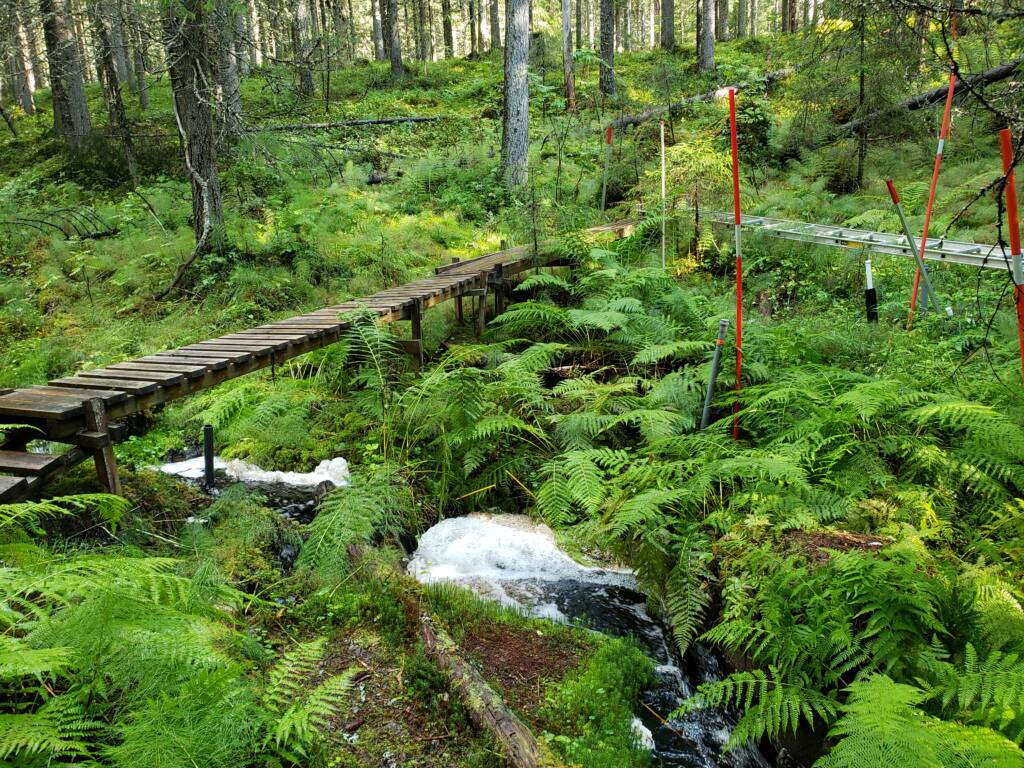IAP-25-039
Soil sulfur: a source or sink of greenhouse gases in boreal landscapes?
Human-driven climate change is destabilising carbon stored in high latitude (boreal) soils, converting it to greenhouse gases (GHG) and potentially driving further warming in a self-sustained feedback loop. We hypothesise that climate-driven biogeochemical transformation of sulphur in these soils is a crucial controlling factor of GHG production. Oxidation of reduced sulphide minerals can cause either carbon dioxide release via the weathering of carbonate minerals, or methane consumption via microbial sulphate reduction. Which of these processes wins out will determine the net GHG release in sulphide-rich boreal soils.
This highly interdisciplinary PhD project will investigate how soil mineral composition, soil hydrology, and soil microbial community combine to determine the net effect of sulphur reduction-oxidation on GHG release in boreal soils. It will therefore improve our understanding of the mechanisms that determine current and future carbon budgets in the especially vulnerable high latitude environments. In the long-term, this work will contribute to better-informed climate predictions and policy solutions.

Click on an image to expand
Image Captions
This project offers multiple field trips to the boreal landscapes of northern Sweden. (Photo Credit: C Hirst)
Methodology
The PhD student will use the following field, laboratory and computer approaches:
1) Characterise the mineralogy, soil water redox, and the microbial communities of contrasting boreal soil types.
2) Measure CO2 and CH4 fluxes in boreal soils across seasonal and interannual variations in temperature and water table.
3) Build a mechanistic model coupling sulphur and carbon redox to GHG fluxes in different soil types and use it to calculate an upscaled estimate of GHG flux across boreal landscapes, using existing regional soil maps.
Project Timeline
Year 1
In 2024, the supervisory team established sampling sites with contrasting sulphur redox and CH4 fluxes in Northern Sweden. Building on this preliminary work, the PhD student and the supervisory team will conduct fieldwork to sample soils, waters and gases from these sites during hot moments of hydrological change (snowmelt, summer rain, autumn freeze-up and winter snow cover), across 2026 – 2027. At the same time, CO2 and CH4 fluxes will be measured using flux chambers, while water table level will be continuously monitored using pressure sensors.
Year 2
The PhD student will be trained across Earth Sciences & Geography departments to characterise soil properties (including pH, organic carbon content and grain size), soil element concentration (X-Ray Fluorescence), mineralogy (X-Ray Diffraction), pore water solute concentrations (ICP-MS) and carbon, sulphur, and oxygen isotope analyses (IR-MS) of waters and solids. This data will be coupled with measurements of organic and inorganic carbon concentrations, microbial community analysis and lipid biomarkers of redox and methanogenesis (e.g., archaeol, bacteriohopanepolyols and sterols).
Year 3
The PhD student will be trained by the supervisory team to synthesise and integrate all physical, geochemical, and microbial data in an open-source python model, characterising the mechanistic relationship between pore water redox conditions and microbially driven GHG fluxes in the three different types of monitored soils. They will then couple the mechanistic model with existing soil type maps of the global boreal regions to quantitatively upscale the redox-driven GHG dynamics in the region.
Year 3.5
The student will complete writing of manuscripts and present their data at an international conference.
Training
& Skills
This project requires a close integration of soil science, geochemistry, hydrology, and microbiology. The student will obtain skills training on these disciplines by a project team spanning soil science (Hirst, van Soest), isotopes and geochemistry (Hirst, Baronas), and soil hydrology (van Soest). Each co-advisor will bring specific complementary expertise and will personally provide training on the relevant concepts and techniques. The Department of Earth Sciences, Durham, serves as the perfect host, since the project strongly builds on the research expertise and preliminary work of Hirst and Baronas. The PhD candidate will be supported in using the world-class mass spectrometry facilities and environmental labs in Durham Geochemistry Centre.
References & further reading
Zolkos, S., Tank, S.E. and Kokelj, S.V., 2018. Mineral weathering and the permafrost carbon‐climate feedback. Geophysical Research Letters, 45(18), pp.9623-9632.
Kemeny, P.C., Li, G.K., Douglas, M., Berelson, W., Chadwick, A.J., Dalleska, N.F., Lamb, M.P., Larsen, W., Magyar, J.S., Rollins, N.E. and Rowland, J., 2023. Arctic permafrost thawing enhances sulfide oxidation. Global Biogeochemical Cycles, 37(11), p.e2022GB007644.
Walsh, E.V., Hilton, R.G., Tank, S.E. and Amos, E., 2024. Temperature sensitivity of the mineral permafrost feedback at the continental scale. Science Advances, 10(41), p.eadq4893.
Schuur, E.A., McGuire, A.D., Schädel, C., Grosse, G., Harden, J.W., Hayes, D.J., Hugelius, G., Koven, C.D., Kuhry, P., Lawrence, D.M. and Natali, S.M., 2015. Climate change and the permafrost carbon feedback. Nature, 520(7546), pp.171-179.
Hicks Pries, C.E., Schuur, E.A., Natali, S.M. and Crummer, K.G., 2016. Old soil carbon losses increase with ecosystem respiration in experimentally thawed tundra. Nature Climate Change, 6(2), pp.214-218.

